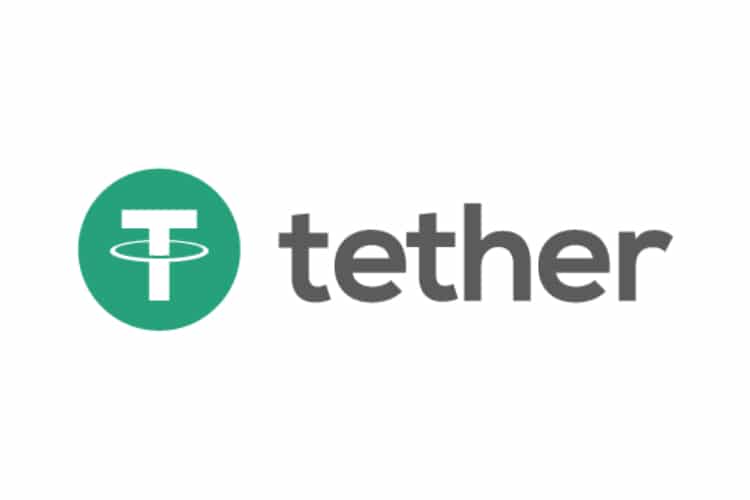Tether (USDT) is a digital currency launched in 2015 by Tether Limited –a Chinese outfit.
While Tether USDT is based on the Bitcoin blockchain, the digital currency, unlike most other cryptocurrencies, maintains a value which is hardly affected by fluctuations in the demand and/or supply of Tether.
Tether (a Chinese outfit and creator of Tether USDT) offers digital tokens which are backed by the outfit’s native fiat currency (USD).
Essentially, the driving philosophy behind the creation of Tether is that cryptocurrencies are highly volatile and there’s the need to minimize their degrees of volatility.
Put simply, USDT (or Tether USDT) is the cryptocurrency of Tether and as you read this article further, you’ll learn more about USDT as well as how the Tether company works.
Definitions of Key Terms
Token –this is a virtual asset built on a different blockchain to act in the manner of the Ethereum blockchain. This means that unlike Bitcoin and other altcoins, tokens are devoid of an independent blockchain. While Bitcoin and other altcoins function in place of money, tokens instead serve as assets or utilities. Broadly, tokens, unlike Bitcoin, do not replace money but they represent specific assets/utilities and are found on the blockchain.
Smart contract –this may be defined as a computer protocol that paves the way for transactions to be executed without the need for third parties. In other words, a smart contract is a digital medium which allows for transparent, reliable and agent-free exchange of valuable items (such as shares, money, etc.) between parties.
Decentralized exchange –this is an exchange medium that lets the users (crypto traders in this case) exercise absolute control over their digital currencies. Decentralized crypto exchanges ensure that users are in perfect control of their private keys but same cannot be said about centralized exchanges. Put simply, a centralized crypto exchange (such as Coinbase) saves users’ private keys and this limits the control they (the users) can exercise over their digital assets.
Protocol –this refers to a set of pre-arranged procedures, instructions or rules that guide the transmission of information between computers. In other words, a protocol is that set of pre-arranged instructions that determine the exchange of information between computers.
For two computers to effectively send/receive information to/from each other, there must be a number of pre-set instructions for the exchange process. Simply, these instructions constitute a protocol and broadly, the protocol further determines the structuring of the information.
Relayer –this functions as an intermediary between trading parties, precisely sellers and buyers of digital tokens. Broadly, a relayer, in the USDT protocol, is an off-chain medium that relays orders between parties, hence removing the need for a middleman that possibly charges an outrageous fee for his service. While a relayer may charge a relatively small fee for a transaction, it’s notable that the relayer uses a self-developed decentralized exchange built on the Etherium protocol.
Whilst relayers clear out the need for middlemen, they enable traders to easily locate buyers (counterparties) and this way, the buyers can receive the traders’ orders cryptographically.
How Does Tether Work? Understanding the Tether Network

Operationally, Tether revolves around three layers namely the Bitcoin blockchain, Omni Protocol and Tether Limited. The second layer (Omni Protocol) is adapted for multiple purposes including creating a cryptocurrency, terminating the cryptocurrency and monitoring its circulation. Omni Protocol further facilitates the storage and peer-to-peer transaction of USDT and fiat.
Tether Limited –which is alternatively described as Tether’s third layer –is saddled with a number of responsibilities including (i) issuance of cryptocurrencies to Tether users (ii) collection of fiat currencies from Tether users (iii) maintenance of reserves (iv) incorporating the Tether cryptocurrency into wallets, exchanges and other projects.
Explanatorily, Tether works in a pretty simple pattern in which Tether Limited receives the fiat currency submitted by a Tether user. Following this, the Tether user will be supplied with USD Tether (by Tether Limited) in exchange for the fiat currency submitted. Notably, The Tether wallet of this user will be credited with USD Tether equivalent to the amount of fiat currency submitted.
As a Tether user, you may want to reconvert your Tethers into fiat currency. In this case, you’ll have to submit the Tethers to Tether Limited. With that done, Tether Limited will then be in the position to credit your bank account with fiat currency.
Trading in Tethers
You can make use of any Tether-compatible exchange for the purchase of Tethers. Also, your Tether USDT wallet lets you conveniently receive/send Tethers to/from other Tether users. Performing a Tether transaction (receiving or sending Tethers) is very easy as you only have to comply with a procedure almost like that of Bitcoin.
Top 3 Wallets for Storing Tether USDT
Tether USDT is storable in a decent number of hardware wallets. In terms of security and ease of use, below are the best 3 hardware wallets for storing Tether USDT:
- Trezor (Trezor T and Trezor One models)–considered among the best versatile hardware wallets for cryptocurrency storage; compatible with Tether and over 1000 other cryptocurrencies
- Ledger Nano (Nano S and Nano X models)–considered excellent hardware wallets for the option of offline storage; provide a substantial degree of security courtesy of the offline storage
- Bitfi (Bitfi Knox model)–considered a great hardware wallet which has been lauded for being “unhackable”
What Are the Pros of Using Tether?
Expeditious transactions –if there are truly reasons to prioritize Tether over majority of the other cryptocurrencies out there, one of those reasons is Tether’s speedy transactions. There’s no need stressing that you may have to wait for days while expecting withdrawals from foreign exchanges to be completed. However, Tether significantly removes this waiting period, ensuring that your transactions go through within seconds.
Price stability –Tether’s USDT is hardly affected by market fluctuations. Rather than depending on market forces, the price of Tether USDT is determined by the normal market price of the US dollar. This, alternatively, translates into the fixed standard of $1 equates 1 USDT. This cogent assurance of price stability is clearly one of the advantages of Tether USDT over many other cryptocurrencies.
Why Was USDT Created?
Tether currencies were created to handle three major issues: to help with national currency transfers, to provide a stable Bitcoin, and to provide another option for checking.
The blockchain can verify the USDT in circulation and the TUSD which is the total USDT in circulation at any time. This amount must equal the amount in the bank account used by Tether Limited to receive and send money to buyers or to pay tethers on the Tether platform. They have regular audits by specialists to check balances, deposits, withdrawals, and transfer reports.
Why Invest in Tether?
If Tether is tied to fiat (national currency) and over time currencies naturally erode their buying power due to inflation, why invest in Tether?
It has a few good things going for it
- Transaction times –
- USD deposits and withdrawals often take 1-4 business days to complete in a traditional banking system. If a transaction has occurred at night or weekends when the bank is closed it could be longer.
- Tether transaction times take place in minutes which is a boon for cryptocurrency traders who often want to rapidly trade in minutes not days.
- Transaction fees –
- SWIFT (Society for Worldwide International Financial Telecommunication) transfers are expensive at $20-$30+. Especially if you are using a fiat that is not supported by the exchange because you are then adding a fee for Forex conversion and a percentage on the transfer.
- Tether charges zero transaction fees between Tether wallets
- Price Stability –
- Cryptocurrencies are volatile when you want to purchase them buy with Tether, not another currency. Currencies are not stable enough as assets.
- Many exchanges do not take fiat but will take Tether.
- Sidelining –
- Taking no position while something is going on. “Cashing out” and waiting for another opportunity or the market timing to be right. Be ready with your Tether. No need to risk and leave money on exchanges.
Conclusion
We hope reading this article has given you an in-depth understanding of Tether USDT and how the Tether network operates.





